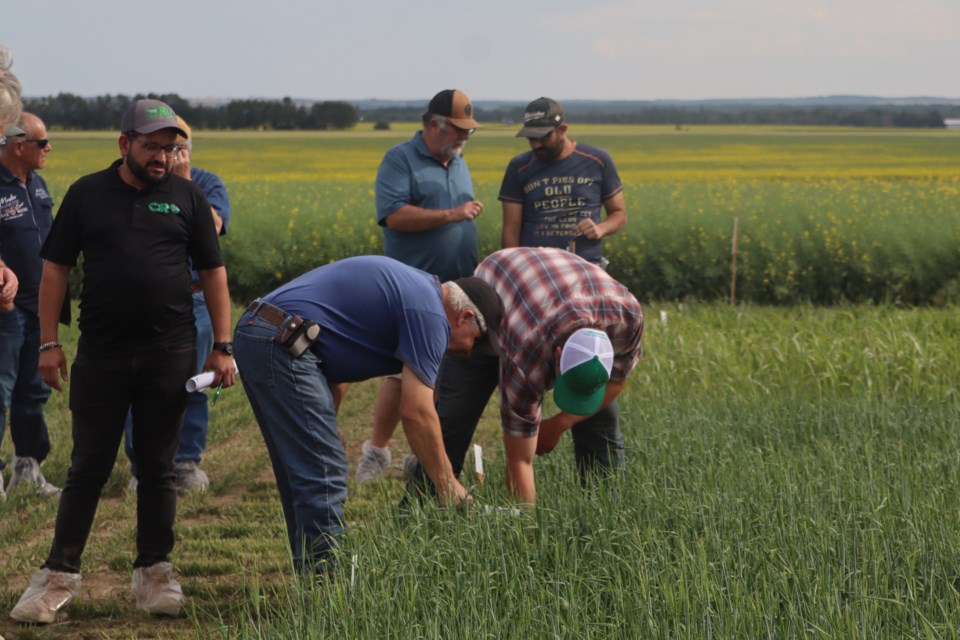The Gateway Research Organization (GRO) hosted a tour of some of its forage crop trial plots for local cattle producers on July 24. Forage crops are grown as feed for livestock either through grazing or storage.
“We’re trying to see what farmers want and what farmers are interested in, and if we can try it for them,” said Andria Carlyon, manager of the GRO. “Now with technology and social media, people can see what they’re trying in Australia and Europe and they’re wanting to try it here and see what it looks like.”
The tour included showcases of two of the GRO’s trial plots with the Jubilee Feedlot located off Range Road 272 north of Westlock RV and the Westlock Golf Club with the Anderson Site located just off Highway 18.
The forage trials included cereal silage and corn variety trials, corn intercropping and cover crops.
“We’re figuring out which of the new varieties should be registered to go on the market," Carlyon said. "There’s like 100 new varieties and out of that, only one makes it to market."
The tour included presentations from different speakers with advanced agricultural experience including Mazan Aljarrah on triticale trials, Trevor Yurchak on bale wrapping and Grant Lastiwka on the benefits of cover crops in forage production.
Aljarrah’s presentation emphasized innovations in triticale which is a hybrid of wheat and rye and has higher protein content than wheat, which can make it ideal feed for cattle.
Yurchak shared his experience with wrapping bales which allows for outdoor storage of hay or other forage. Yurchak provided two samples with one being unwrapped forage and another being wrapped forage to display the advantages of this approach.
Lastiwka gave a presentation on cover crops, which are crops planted for soil health instead of harvest.
“With the amount of data that big companies are trying to leverage and want farmers to use, you can collect data from so many different areas but farmers just don't have time to analyze it anymore,” said Carlyon. “But it is cool how that's way more accessible and way cheaper and easier to look at with machine learning, and you can teach it to create better maps that are way easier for your average farmer.”
Recent rainfall in the area has been quite low, which has affected much of the growth for the trials, and the growing season in general. The GRO’s Jubilee Feedlot site recorded 104.2 mm of rain from May 1-July 23, while the Anderson Site recorded 62.6 mm during the same time period.
“Some of the big feedlots would have been bringing in big yields this week but other yields are lower,” said Carlyon. “Most of these grains aren’t getting filled up with enough moisture. They look like they might have 30 kernels, but as you get closer to harvest, there will be blanks. Those kernels won’t have actually filled. Outside of this region, we’ve heard reports that people are already feeding their cattle hay.”



